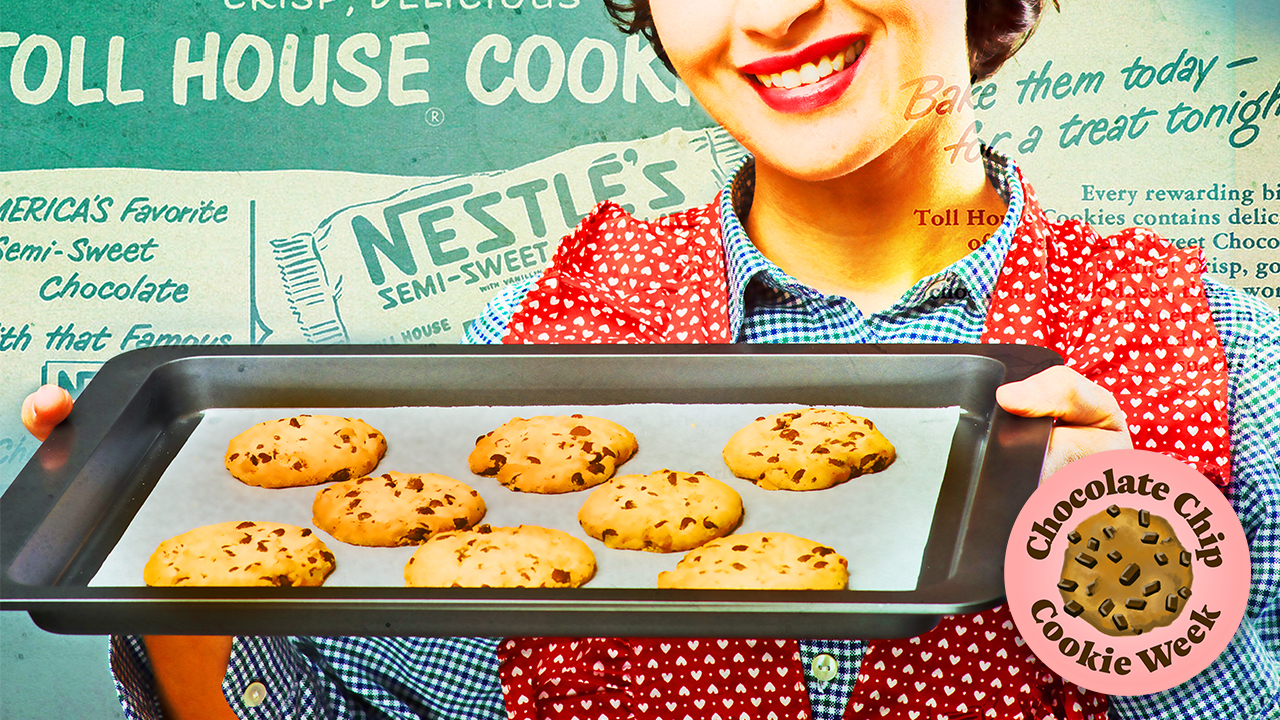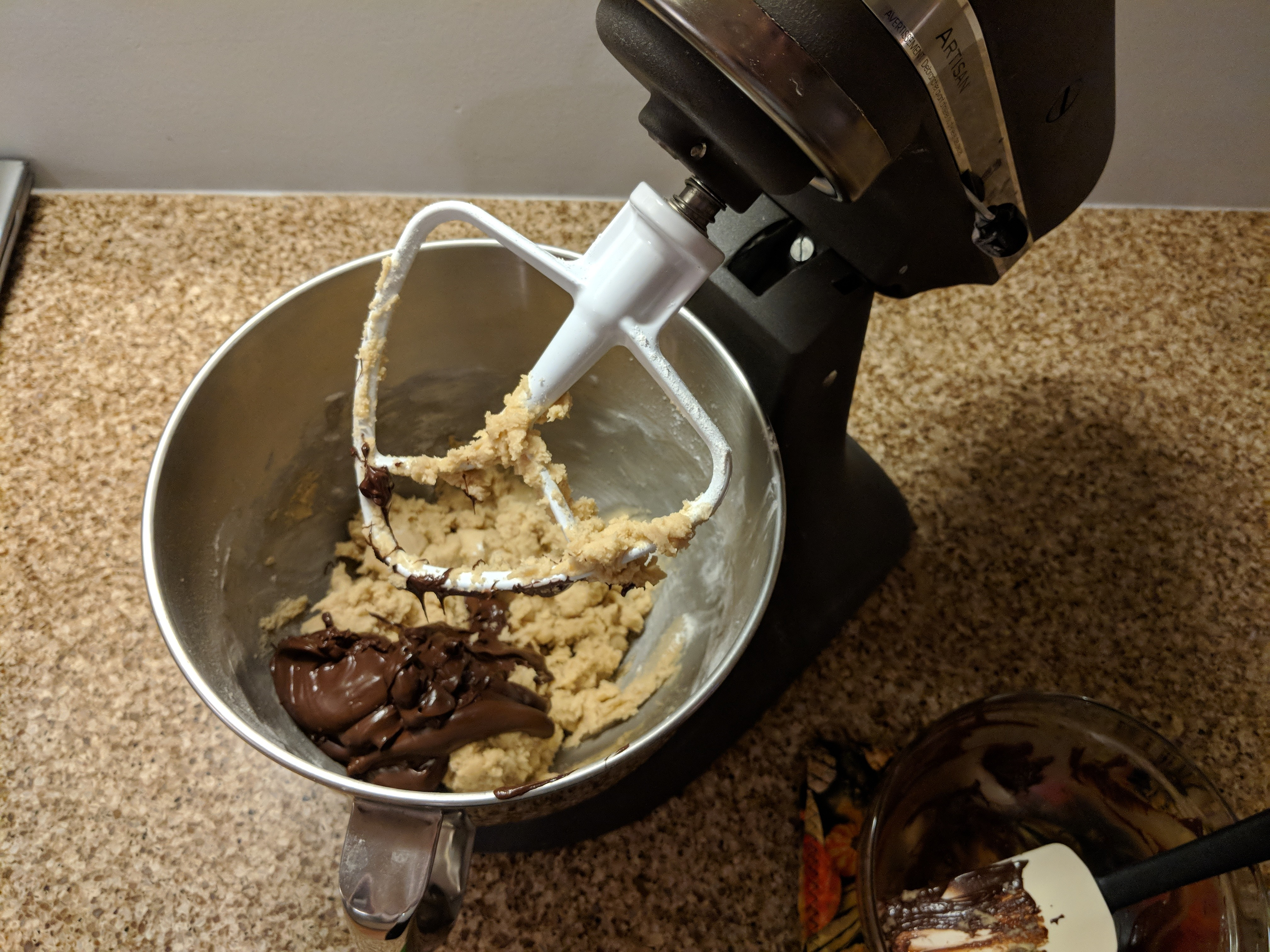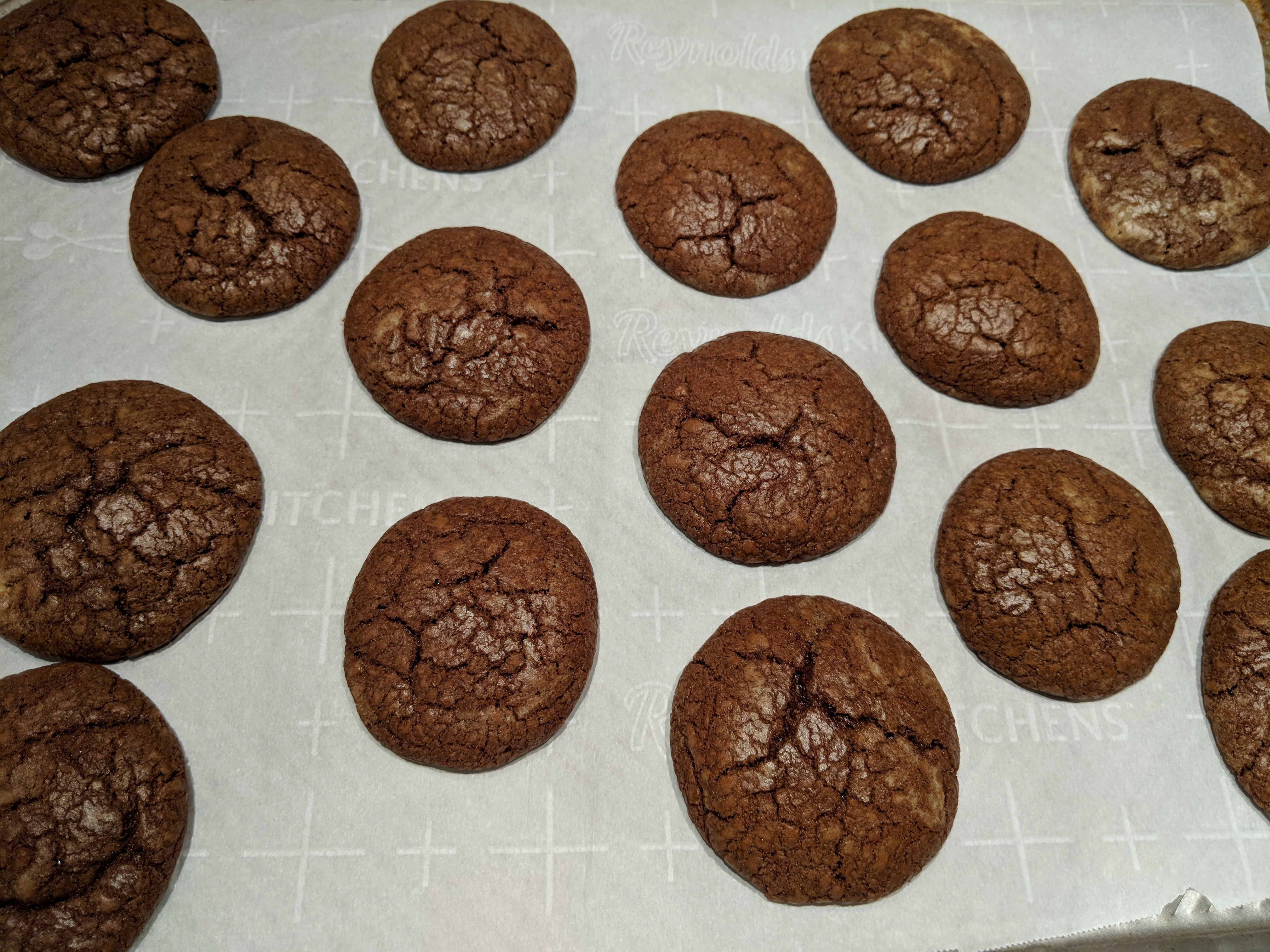Was The Chocolate Chip Cookie Dumb Luck Or Nobel-Level Genius?
Welcome to Chocolate Chip Cookie Week, celebrating one of America's most iconic and widely loved comfort foods.
When I was a kid, I derived endless joy from a book called Mistakes That Worked, a collection of cartoon-illustrated happy accidents of history—most notably, the invention of chocolate chip cookies. In 1938, the book claims, cooks at the Toll House Inn tried to get creative when they ran out of chocolate dough, hurriedly breaking a Nestlé semi-sweet chocolate bar into the mixture so that it might melt down and distribute throughout the batch, resulting in chocolate cookies. But no! What they were left with were delightfully distinct chocolate morsels scattered throughout each cookie, and customers went wild for the result.
Depending on who you believe, this account is largely fabricated; my precious book turned out to be pretty fast and loose with the facts of its historical accounts. Biographer Carolyn Wyman notes in The Great American Chocolate Chip Cookie Book that chef Ruth Graves Wakefield intentionally developed the cookie to diversify dessert offerings at the Toll House Inn. I decided to bring this up with Nestlé's Customer Care team. Turns out, they peddle the apocryphal version of the tale, too:

Yeah, yeah. Cute, Nestlé. I pressed on.

After days of deafening silence, I received a curt reply:

Clearly, Nestlé isn't used to having its back against a wall. And while I'm highly suspicious of history's motives for reducing one woman's confectionery genius to a simple "lucky break" (will no woman's accomplishments be recognized in her own era?), the apocryphal version of the tale got me thinking: If Wakefield really had been trying to distribute Nestlé morsels in a way that flavored the whole batch of dough, could it be done to delicious effect?
Specifically, what would happen if, in the process of making chocolate chip cookies, you melted down the chocolate chips, poured that melted chocolate into the batter, formed the cookies, and then baked them as one normally would? Would the result be nothing more than a big, gloppy mess? Is there some bit of food science involving the melting point of chocolate chips that I'm not accounting for? Would I even be able to wrest the finished cookies from their parchment when all was said and done?
Whatever the case, I was willing to find out.
The Recipe
It seemed appropriate to turn to Mrs. Wakefield's original Toll House recipe (thank you, Serious Eats). It has a simple, straightforward ingredient list and some charmingly antiquated steps, such as dissolving the baking soda in hot water before adding it to the mixture. One issue: this recipe recommends 48 hours of refrigeration prior to baking. I've never withstood such deferred gratification in my life.
So I turned instead to Smitten Kitchen's preferred chocolate chip recipe, borrowed from David Lebovitz's Great Book Of Chocolate. Author Deb Perelman praises this recipe for its high chocolate-to-dough ratio, and I've made these cookies in the past to great acclaim. To hew closer to Wakefield's original vision, I decide to forego the suggested toasted nuts and flaky sea salt, additions that mark the recipe as a product of the foodie 2000s. We'll focus solely on the chocolate, soon to be rendered a thick, stirrable gloop.
The Dough
Everything's going great. I've got my butters and sugars fluffing up in the stand mixer, the vanilla is nice and fragrant, and I managed not to spill half the baking soda off the measuring spoon and onto my countertop (a possible first). The dog has taken up his dutiful post on my foot to await dropped anything.
Next I microwave the chocolate chips according to the directions on the Toll House bag. I tend to avoid using chocolate chips whenever possible, for the same reason I avoid bags of shredded cheddar and baby carrots: the exterior of the product becomes dry and flavorless when exposed for so long. But they manage to melt down well enough; I avoid the temptation to add a bit of Crisco shortening to gloss it up, not knowing how that would thin out the dough.
Once added to the dough, my stand mixer begins to moan in protest. It's a lot of thickness to plop into the bowl all at once, but with a few scrape-downs of the bowl, it's all incorporated. The dough is paler than I would've expected; I probably could have upped the chocolate chip ratio in its liquid form. The prepared dough is no more sticky than a usual batch would be, which is surprising, and probably speaks to the aforementioned dryness of chocolate chips.
Into the 350-degree oven they go.

The Bake
Absolutely nothing remarkable about this bake. They have the same puff-up and minimal spread-out that normal chocolate chip cookies would, and with no chips to disrupt their topography, they develop a cute little crackle on top, like a molasses cookie might.
The Taste
Like a spoonful of coffee grounds, the real joy comes from smelling these cookies, rather than tasting them. Described as "dull" by my husband (who quickly added, "But I like how soft they are!"), the resultant cookie does indeed have a flat flavor that I can only describe as sweet. Even hunting for the chocolate flavor, my palate cannot find it. My guess is that the added sugar in the chips overpowers the chocolate flavor you'd get from using an unsweetened cocoa powder, which is why the latter is the go-to ingredient in any normal chocolate dough.
Chocolate chips, after all, are intended to be deployed as chips. Tiny, hyper-concentrated gems of flavor bursting forth from a mellow bedrock of cookie. A chef as talented as Ruth Graves Wakefield would have surely seen these morsels for their textural potential. Moreover, why would we buy any historical account of her baking that suggests she didn't realize the way dough looks when you pop it in the oven is more or less the way it'll look when it comes out? Do we seriously prefer a version of history in which Wakefield believed a speckled, lumpy dough would somehow end up a perfectly blended confection?
It's time to recognize this cookie as the genius invention that it is. Not a mistake that worked, but an innovation that changed every childhood thereafter—no matter what the ivory-tower purveyors of Toll House chocolate chips would have us believe.


